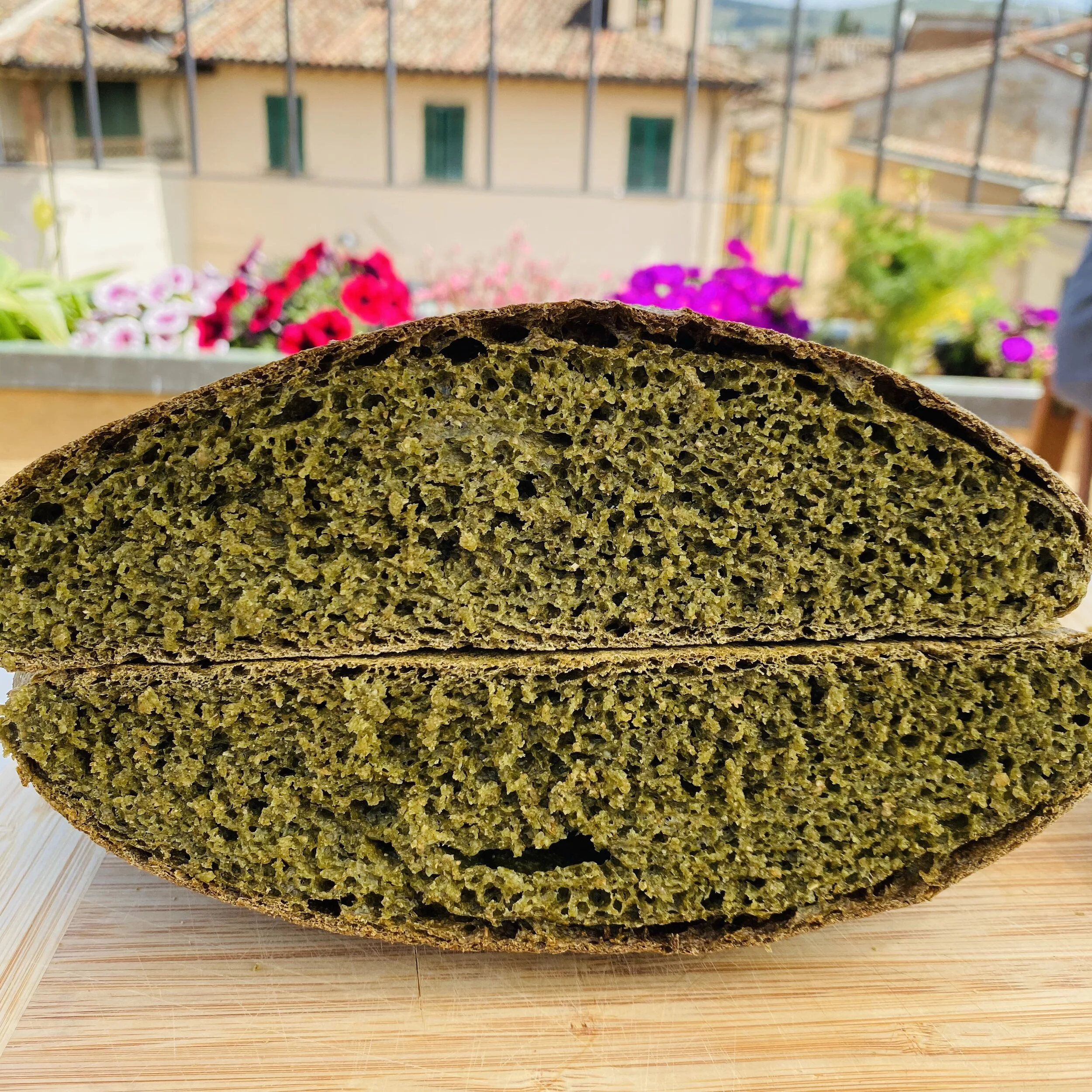In the area where I live, the Upper Tiber Valley, nettles are currently in their prime. In a recent conversation with my bread guru in Rome, he told me about a bread he had once had made with nettles. The recipe had been passed down to him from a small band of friars who, in the mid-1980s, ran a vegetarian osteria in Trastevere, Rome, which attained a certain notoriety.
They were members of the Augustinian Recollects, a reformist group seeking a more austere mendicant life than that of the Order of Augustinians. Their vow to poverty was reflected in their approach to cooking. So, while their nettles bread does not replicate a specific historical bread, the choice to use it as a manifestation of their devotion to humility and simplicity does reenact the custom of the poor of bulking bread out with whatever was on hand at the moment and, in so doing, increase the volume while fortifying it nutritionally.
The Panificio Boldrini, still in operation in Trastevere, allowed the friars to use their wood burning oven in the bakery’s off-hours. Nettles bread was seasonal, of course, but in the Roman climate the notorious stinging plants appear in February and remain edible through to the end of spring.
This was a rough whole wheat bread, significant in a context in which white bread was the ideal, a marker of social status. The combination of nettles with whole wheat would have unmistakably branded this bread as humble if not lowly.
The other symbolic aspect of this bread is the rhombus shape, which carries the meaning of inner balance.
The photos here are of my loaf made with home-milled red fife and nettles I had foraged from the banks of the Tiber. As the recipe was passed on to me orally, I had misunderstood the shape to be rhomboidal - a similar parallelogram, but as the dough over-proofed while I was out for a walk, it eased into a rhombus.
The crumb was very evenly aerated and it gave off a slight fragrance of tea. The nettles also helped maintain the moisture, as such it was springy but not doughy. It is a bread I would make again simply for the texture and flavor.
Images are few as I had not planned on making this into a website post - but upon request from the Bread History and Practice group, I am recording the recipe so that it will be in a permanent, sharable form.
Ingredients:
200g 100% hydration starter + 100g high extraction (high protein bread) flour + 100g water [pre-ferment]
400g whole wheat durum flour (best flavor results from home milling) russello, red fife, kamut are suggestions.
175g well-squeezed cooked nettles (see video posted below) NB- the squeezed out water can be part of the water total.
1/2 tbsp salt
150-200g water (depending… the dough should hold its shape to a certain extent)
Makes 1 1.2k loaf or two 600g loaves
Instructions:
Prepare the preferment in a medium bowl, cover with a plate and leave until fully bubbly and active.
Make a slurry with the nettles and water. Alternatively, chop it finely if you prefer bits to a homogeneous distribution.
If using a mixer: add the preferment and the slurry/water + nettles and mix.
Add half the flour and combine fully to the liquid batter; mix the salt with the remaining flour and add to the dough. Mix two minutes.
Allow the bread to rest 15 minutes and then stretch and fold. Repeat twice more.
Otherwise, in a bowl or bread trough, follow the same procedure by hand, turning the dough out to knead for 10 minutes.
Form a tight ball, smooth it over with olive oil, and place in a container to refrigerate overnight.
The next day, do a letter fold and turn the long ends onto each other. On a piece of parchment paper, form the dough into a rhombus (lozenge) shape. (Again, note that I had understood rhomboidal - I did not get the shaping right).
Allow to rise in a warm environment approximately 2 hours.
Preheat the oven equipped with a baking stone to 240°C for half an hour.
Place the formed loaf into the oven, humidify using whatever system you are accustomed to, close the oven door and reduce the heat to 200°C. Bake for one half hour.
Tent the loaf with foil and turn it in the oven. Bake for another 20 minutes on 180°C.







